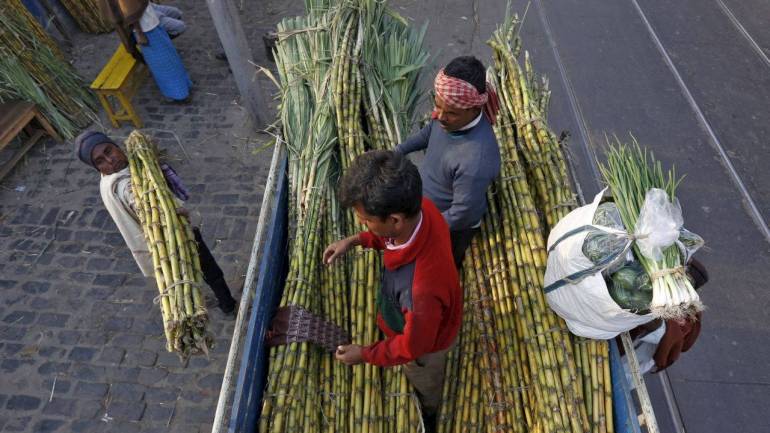An overdose of sugar incentives is affecting both the sugar sector in India and the world
Just as excessive sugar can lead to obesity, a major risk for diabetes, the government’s recent sweeteners for sugarcane farmers have the potential of creating problems for the whole sector.
Earlier this week, the Centre set the fair and remunerative price (FRP) – the benchmark procurement price - for sugarcane at Rs 275 per quintal assuming a recovery rate (the rate of conversion of per metric tonne of sugarcane into sugar) of 10 percent.
The new rate is only Rs 20 per quintal higher than that of the previous season, but also represents a 77.42 percent markup over the cost of production. That is higher than the 50 percent margin for other crops for which the government has announced minimum support prices. A newer variety of cane which is expected to improve recovery rates will increase the payment to farmers. However, the benefit will not percolate to farmers, at least not immediately.
Sugar mills in India, which are riddled with high inventory and low realisations, owe farmers around Rs 18,000 crore in arrears. There is a glut of sugar both in India and globally. For the crushing season 2017-18 (October-September), sugar production is expected to exceed 30 million tonne. Inventory in India is likely to more than double to 10 million tonnes by the end of the current marketing year on September 30. A year ago, it was just 3.87 million tonnes.
related news
As a result, sugar prices have fallen from Rs 36-37 a kg levels to less than Rs 30 a kg, which is lower than the cost of operations, if the new FRP is taken into account. News of a jump in Indian production and high inventory has pushed international prices lower by 16 percent this year. India is the second largest sugar producer in the world.
Though the government has tried to ease the situation by allowing 2 million tonnes of sugar for exports, low international prices have meant that few mills are willing to export. So far this year, the country has contracted only 275,000 tonnes of sugar for exports.
The bigger worry is that glut in the sugar sector is expected to continue. Sugarcane acreage is estimated to be higher by 8 percent at around 5.43 million hectares in 2018-19 and production is expected to touch 35.5 million tonnes in the next crushing season, says industry body Indian Sugar Mills Association (ISMA).
The latest FRP will only incentivize farmers to grow more sugarcane. As per the Sugarcane Control Order sugar mills are expected to buy all sugarcane that arrives at their gate from farmers within a radius of 25 km.
The FRP announcement will thus make matters worse for the sugar industry in India and across the globe. Indian farmers are growing more sugarcane than the country consumes. Globally, sugar inventory has touched a record high of 19.6 million tonnes. The glut comes at a time of falling sugar consumption as consumers become increasingly health conscious and firms such as Pepsico and Mondelez International, makers of Cadbury chocolates, have said that they would reduce sugar content in their products.
In this scenario, of lower demand and high production and input costs, sugarcane is not the only thing getting crushed. Cane payment for crushing season 2018-19 is expected to be 83,000 crore while for the next year this figure could increase to over Rs 97,000 crore. Beleaguered sugar mills will find it difficult to make good these payments.
There are only two ways this gap could be filled. The first is by implementing the Rangarajan Committee formula proposed nearly five years ago which called for cane prices to be linked to sugar prices. The second is the government extending the same support to the industry that it does to the farmer.
In an election year, with fears of fiscal slippage already high, the second option is going to be a tough call. As for the first, no government has the strength to reduce prices paid to farmers. As usual, taxpayers will foot the bill for populism and faulty policy.